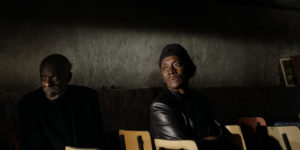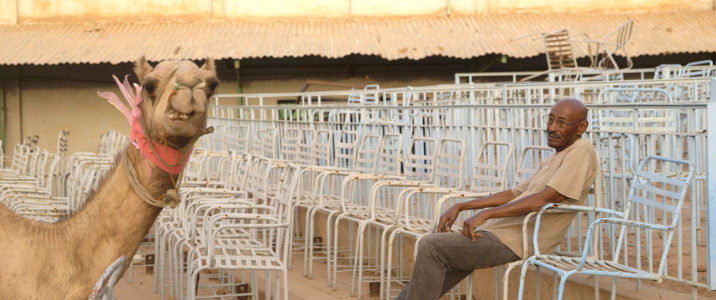2019 didn’t mark the beginning or end of anything in cinema. Rather, it provided a return to well-tread grounds for discussion, primarily what cinema really means in the context of multimedia streaming platforms and corporate monopolization of the global market.
The forest was often lost for the trees in the discourse surrounding these topics, thanks largely to a tendency for generating false controversies. How else could Martin Scorsese’s rumination on his impending mortality be pilloried by the scandalous revelation that he had still not deigned to see Joker? Yes, Todd Phillips’ surprise smash had liberally drawn inspiration from Taxi Driver and The King of Comedy, but setting aside the merits of the film I think there’s a facet to this which has not been sufficiently discussed. Namely, a film like Joker, like so many films from 2019, tangled with its cultural and historical lineage as it sought to articulate a semblance of truth about the modern world. The ten best films of 2019 (and several runner-ups) all dove into this endeavor to most cogently state a particular set of truths about the power of historical narratives that manifest themselves in the content we “consume”. More than mere commodities, these films challenged, invigorated, and probed the collective imagination to remind us that cinema is a fluid, heterogenous mode of interpersonal engagement. It is neither ending nor beginning, but continuously changing. In a time of extreme anxiety and uncertainty, that’s something worth celebrating.
10. An Elephant Sitting Still
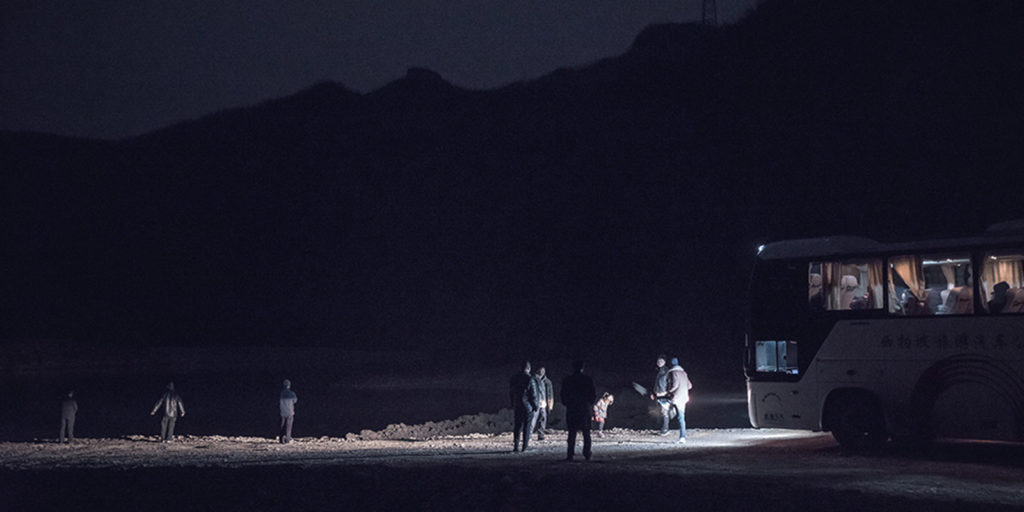
Despair permeates nearly every frame of Hu Bo’s four-hour An Elephant Sitting Still, a critical portrait of life in Chinese society over a single day in the lives of four characters. Their stories are linked by violence and misunderstanding, all while they strive to escape the hopelessness of the urban squalor which entombs them in a perpetually gray smog. Hu, a former disciple of Béla Tarr, has adopted his teacher’s penchant for long takes paired with a fearless dive into spiritual and moral decay. Yet where Hu differs from the Hungarian maestro is the almost spontaneous nature of his tracking shots, often placed over the shoulders of his characters moving initially out of pure inertia and ultimately toward some ineffable ideal embodied by the titular pachyderm. Hu’s unsparing lens renders the ugliness and humanity of his characters to disarmingly compassionate effect, aided in no small part both by his intricate blocking and novelistic screenplay. It would be the only film he’d make before committing suicide at the age of 29, and though his death is a tragically abrupt end to what could have been, what we are left with is nevertheless a stirring, compellingly original statement on fractured communities piecing themselves back together again.
9. Transit
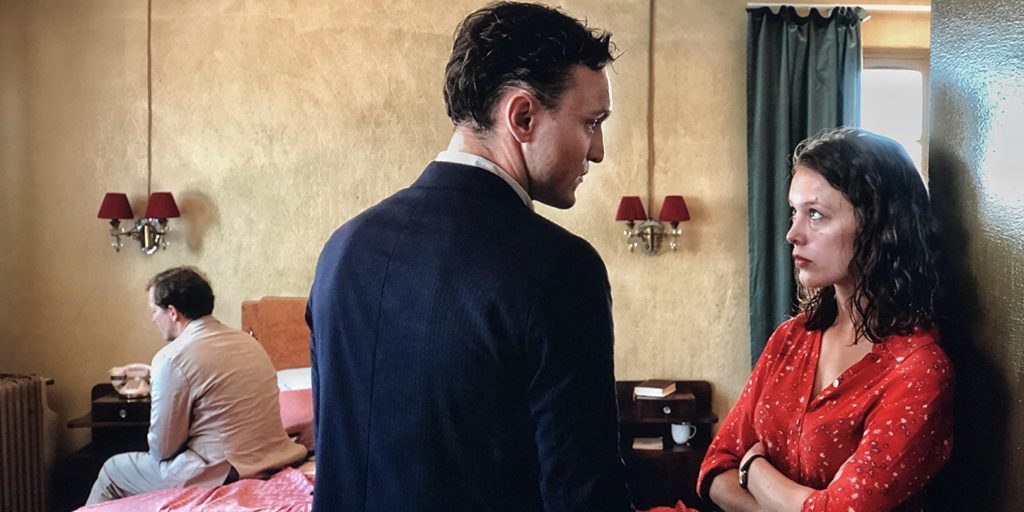
Christian Petzold’s ongoing interest in the historical politics of the melodrama genre strikes new ground in one of his most chilling works. Transit retains the basic story Anna Seghers put to the page in her 1942 novel, in which a German man (Franz Rogowski) seeking refuge from fascist forces in Marseille assumes the identity of a dead writer. Petzold deviates from his source in two ways, one significant and the other subtle. The first is his alteration of the novel’s setting to the present with contemporary markers, from cell phones to military-grade armor worn by police, while subtly disorienting our sense of spatiotemporal grounding through dressing his characters in fashion which would not have been out of place during the early 1940s. The second is the shifting of the role of narrator from the protagonist to a tertiary character. Yet the nearly omnipotent relaying of information by this bartender is part of Petzold’s ruthless design to align us with the witness, the passive observer who merely watches events unfold. For a director whose works are often called Hitchcockian, Petzold repurposes voyeurism to hauntingly urgent effect. The collapse of truth is intrinsically linked with the disintegration of social morality, made all the more frightening by the irrelevance of when these events are happening. What matters is that they are happening again.
8. La Cordillera de Los Sueños

Over the majority of his nearly six-decade career, filmmaker Patricio Guzman has made the loss of his country the primary focus of his political art. The focal point in question is the Chilean coup of 1973, one which Guzman has analyzed in exacting detail from nearly every conceivable vantage point in his documentaries, from the visceral image on the ground during the coup (the 4-hour landmark The Battle of Chile) to the psychic trauma of Augusto Pinochet’s violent legacy. This latter topic has produced two films this past decade, Nostalgia for the Light and The Pearl Button, which can be partnered with La Cordillera de Los Sueños in a trilogy. The final film in this triptych literally maps the ghostly afterimage of the Pinochet regime onto Chile’s grand vistas, including the eponymous cordillera which serves as silent sentinel and implacable witness to the transformation of a country Guzman no longer recognizes. But Guzman’s poetic linkage of imagery, both archival and present, do more than reiterate his talking points. With rueful beauty, La Cordillera gazes longingly at a country torn in two by the ultimate historical trajectory mapped by the violent supremacy of neoliberalism. The dual familiarity and alienation Guzman experiences converge in what could be his final film, a fond farewell to the nation he once knew so well that nevertheless remains achingly hopeful for its return.
7. The Lighthouse

Springing forth from the wellsprings of late 19th Century American mythology, Robert Eggers’ The Lighthouse seems to extend from the nightmarish recesses of F.W. Murnau and Victor Sjöström. Indeed, the film’s lush black-and-white cinematography harkens to the the silent era, while its textured soundscape of sea foam and foghorns perfectly echo the discordant score by Mark Korven in a sort of call-and-response which embroils the audience in the encroaching madness of its two protagonists (Robert Pattinson and Willem Dafoe, turning in some of the finest work of their respective careers). But the film is as much a ghost story as it is a sick joke. Like Peter Strickland’s In Fabric, The Lighthouse is a pitch-black comedy masquerading as a horror film whose target is the vanity of toxic masculinity both in its purported mastery of the elements and of stoic, heteronormative camaraderie. But the ultimate reclamation of both body and mind by the inexplicable is embodied by the most unnerving laughter of all; the caw of a hungry seagull which sounds suspiciously like a knowing cackle.
6. Parasite
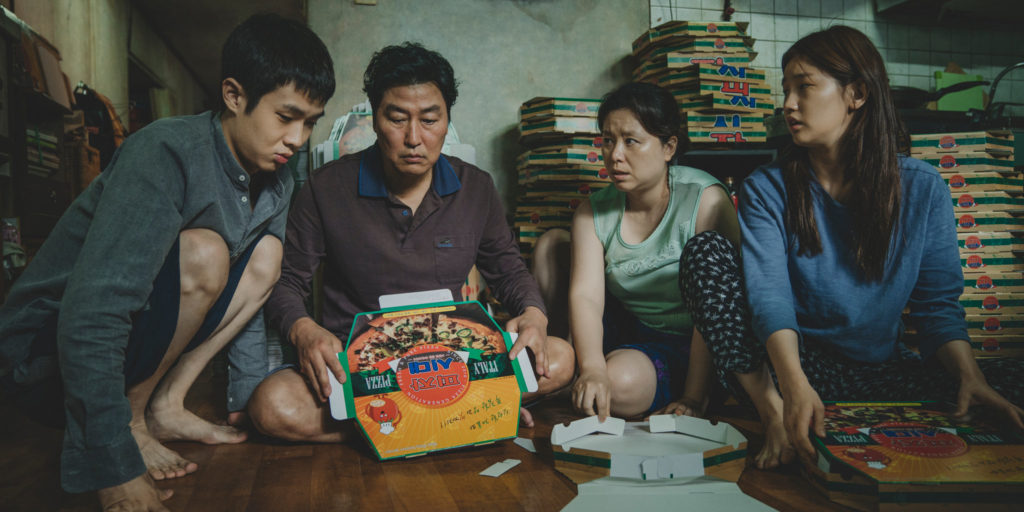
Bong Joon-ho may well be one of modern cinema’s premier moralists. Through didacticism, the South Korean filmmaker has spun his own warped moral tales concerning the ethical underpinnings of ecological stewardship and socioeconomic disparity. These two factions convalesce to their most pointed effect yet in Parasite, which begins as an illicitly entertaining tale of deceit and displacement only to hurtle toward tragic, brutal ends with ferocious economy. Yet the film’s initial catharsis through violence, though necessary, is depicted as ultimately misplaced. Even the elimination of the figurehead of elitist, callous transnationalism does nothing to quell the insidious psychological trauma instilled by multi-generational exposure to systemic capitalist practices. The dreams of Bong’s characters, like the parable he crafts for his audience, is a necessary coping mechanism, though a greater remedy is needed for the epidemic impacting us all and rendering those dreams as commodified child’s play.
5. Talking About Trees
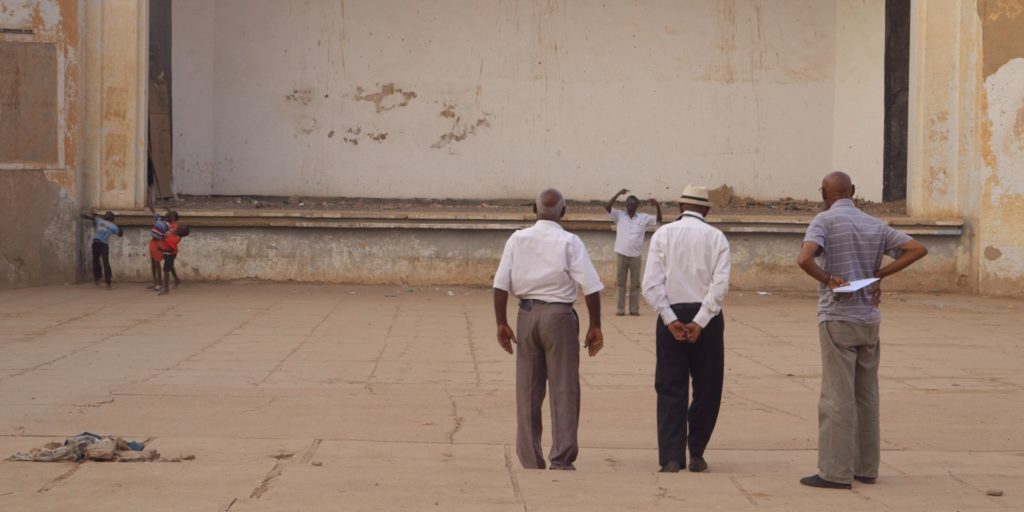
The intersection of space and history provide a crux for the politics of the cinema, both in relation to the film itself as well as the area in which the film is projected for an audience. Suhaib Gasmelbari intuitively understands this and has made it the impetus for his great documentary Talking About Trees, in which four of Sudan’s most revered filmmakers reminisce about their work and how their careers were abruptly stalled by the 1989 military coup which marked the thirty year dictatorship under Omar al-Bashir. Bureaucracy and Islamic censorship have impeded the filmmakers from directing more films, as well as from establishing a community cinema in the town of Omdurman. Talking About Trees deals with sentimentality yet isn’t sentimental itself; rather, its observational style lends equal weight to memories both pleasant (filmmaking) and traumatic (experiences of torture). Through the patient excavation of the national cinema as it relates both to these filmmakers and their country, Talking About Trees moves toward what its title implies; a revelation of that which has remained buried and repressed for too long, slowly, tenaciously crawling back toward the light of day.
4. Divine Love
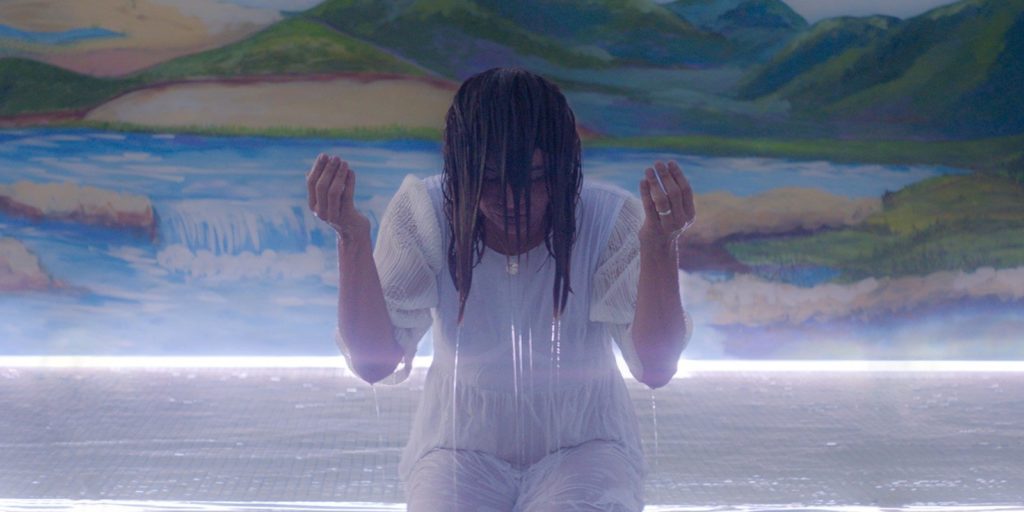
In a tremendous year for Brazilian Cinema, Gabriel Mascaro’s Divine Love (Divino Amor) was the crown jewel in a series of films contending with the nation’s cultural history bleeding into an uncertain future. The film’s vision of a Brazil which remains secular only in name could have easily strayed into smug mockery of a nation gripped by evangelicalism. There is plenty of wry humor in the edifices of drive-thru prayers and meetings hosted by the eponymous church which often end in extramarital sex. And the peculiar circumstances which befall the latter’s most devout congregant (Dira Paes) superficially sound like the punchline to a cosmic joke. But thanks in no small part to Paes’ tremendous performance, Divine Love is a stirring inquiry into the limits of faith under the dogmatic doctrine of state-sanctioned worship. For every flash of garish neon, Mascaro evinces the emotional tumult of his heroine’s tireless search for a response from God. In the film’s final shot of fallible, literally naked humanity, both she and we find an answer.
3. The Irishman
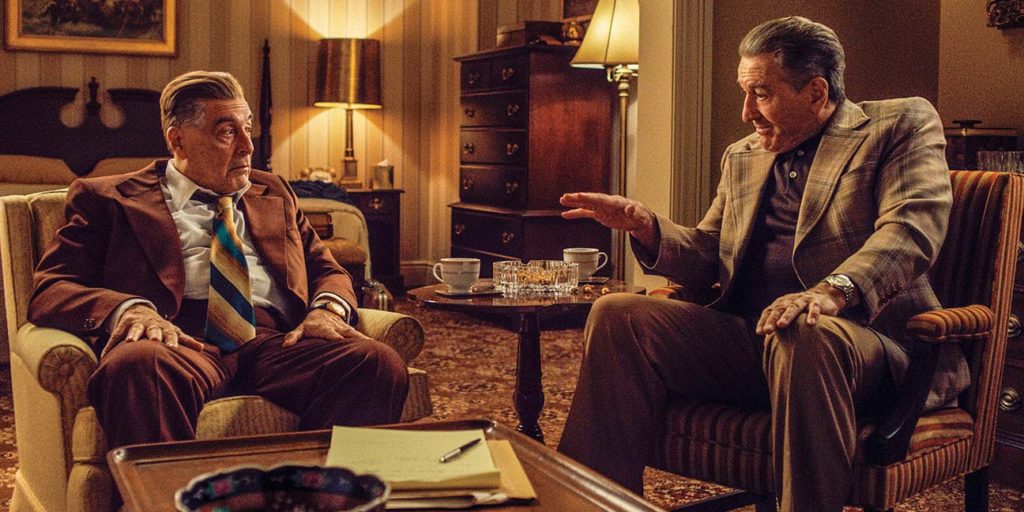
In her book Stiffed: the Betrayal of the American Man, Susan Faludi charted a trajectory of toxic male aggression in America stemming from the trauma of the Second World War through the dawn of the new millennium. This historical milieu of patriarchal restitution has provided the heft of Martin Scorsese’s filmography, up to some of his most recent films like Shutter Island and The Wolf of Wall Street. But with his newest masterwork The Irishman, Scorsese explicates a reckoning with crime that exists beyond the machinations of fatalist gangster tropes. Even more than his masterpiece Goodfellas, The Irishman examines the way a history that is both personal and societal is written by the victors, often men who nevertheless numb themselves to the very specter of death precisely because it is the only constant they know. But what Frank Sheerhan (Robert Deniro) fears isn’t death; it is confronting his failure as a man of integrity for his family and the man (a fiery Al Pacino as Jimmy Hoffa) he aspired to be yet ultimately murdered. Whether he really killed Hoffa or not is beside the point; he has written his legacy with the legend that he has. That legend itself remains his thesis, his personal manifesto, one which is ultimately met in kind after nearly three and a half hours of loquacious narration by resounding, holistic silence.
2. Portrait of a Lady on Fire
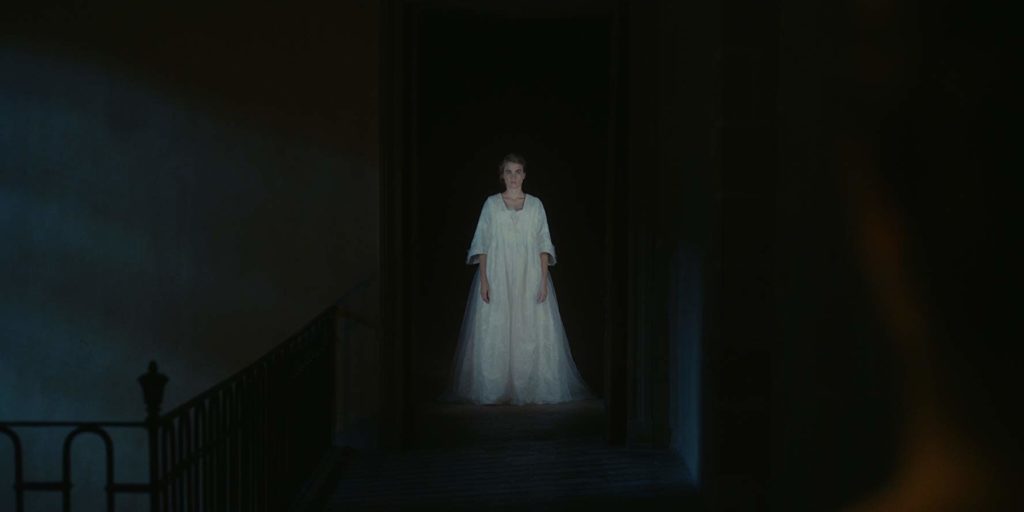
Despite having only three directorial credits to her name, all within the past decade, Céline Sciamma has established herself as a remarkable new talent in French LGBTQ+ Cinema. But her fourth feature, Portrait of a Lady on Fire, marked the arrival of a major auteur in world cinema. Sciamma uses her first period piece to hang a tapestry of carefully composed, delicately considered glances and exchanges between an 18th Century painter and the subject of the painting whose Milanese fiancee has commissioned the artist to create a painting as a wedding gift. As both artist and subject become closer, Sciamma’s scenario layers Orphic undercurrents of longing which seamlessly translate into the carefully composed mise-en-scene. Sciamma has an intrinsic understanding of how the camera acts as an extension of voyeuristic desire, one which is embodied by the artist’s gaze of the subject. But rather than clinically observing the characters, the film slowly but firmly envelops us in tactile hues of red and green, in elemental surges of fire and water, to deeply engage our empathy. Sciamma’s methodical command of her craft culminates in two closing scenes that may seem narratively superfluous on first glance but are disarming in their emotional devastation. Portrait of a Lady on Fire renders the female gaze both politically resonant and sensuously ecstatic through a tragic romance that paradoxically exudes a rapturous immediacy unmatched by anything else this year.
1. La Flor
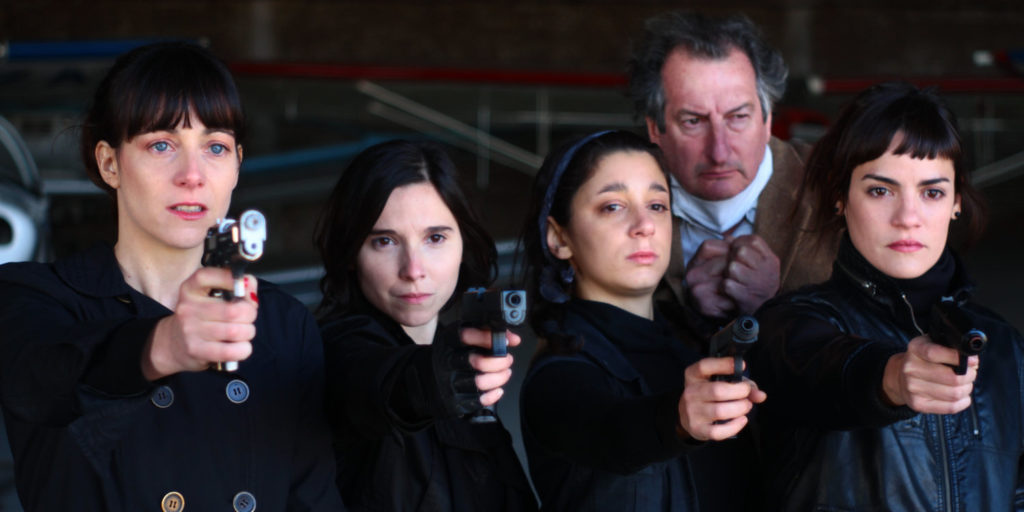
In a decade which saw Cahiers du Cinema list Twin Peaks: The Return as the best “film”, the distinction between what constitutes cinema and television in critical circles has become progressively blurred, due in no small part to shifts in viewing practices via streaming and binge-watching. So purely on the level of its very form, Mariano Llinás’ La Flor is both emblematic of this trend and, like Jacques Rivette’s Out 1, simultaneously pushing the limitations of how we define a film. This 14-hour epic comprised of six loosely connected stories began as an exercise for Llinás to focus on the Piel de Lava acting troupe of four actresses. Shot over the course of many years on progressively sophisticated digital cameras in four continents, the result is a sprawling, stupefying dive into the myriad functions of storytelling akin to the works of Borges and Bolaño. But this is not some indulgent, esoteric treatise on memetic devices in historicity; La Flor is an audacious conflagration of genres and tropes whose subjects and characters include spies, musicians, mummies, and scorpion venom that may be the key to the elixir of life. Above all, La Flor is a singular experience which remarkably eschews any pretension over its immense running time in favor of an endless bevy of inquisitive delight at what raconteurs across the ages are capable of. Whether you binge the entire thing or pace yourself over a longer period, the prevailing mood we’re left with once we’ve reached the end is all too rare in arthouse cinema of this ambition and magnitude: unfettered, rapturous joie de vivre.
Runner-ups (in alphabetical order):
Alles Gutte

La Camarista

Diane
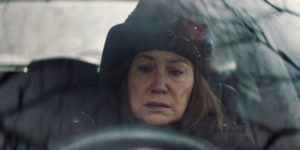
Dolor y Gloria
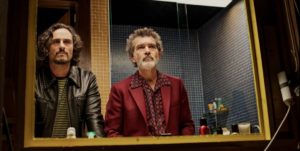
A Hidden Life

Long Day’s Journey Into Night

Marriage Story
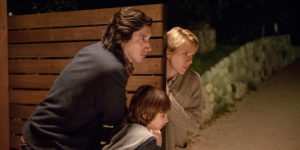
Once Upon a Time… in Hollywood

Uncut Gems

Vitalina Varela
